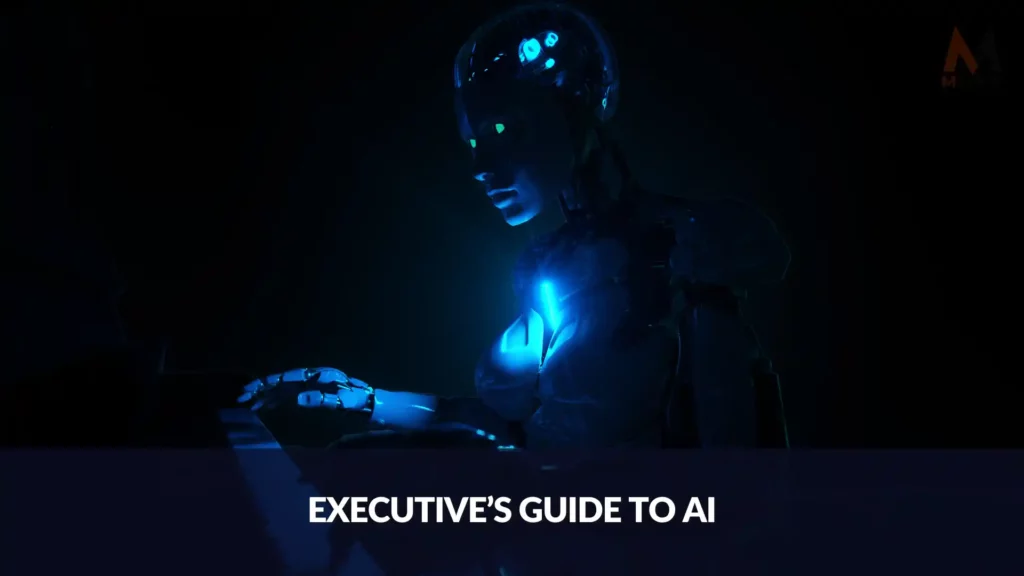AI Guide for Executives
AN AI EXECUTIVE GUIDE TO AI
Everything you need to Know with Our AI Guide for Executives.
WHY WAS THIS EXECUTIVE’S GUIDE TO AI WAS CREATED
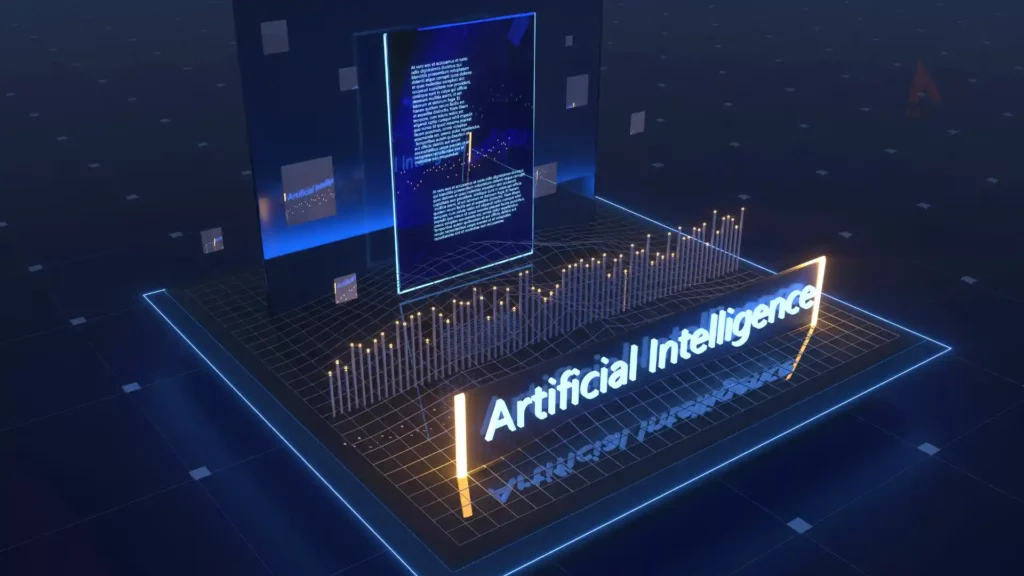
This Executive’s Guide to AI aims to educate executives on the fundamentals of artificial intelligence. The Beginners Guide to artificial intelligence for Executives and the ai guide, but we go a little deeper into the subject matter of AI with our new AI guide for executives. Marketing executives can read more with our NEW AI Marketing Guide.
This guide will introduce the technology, discuss its potential applications and challenges, and explore how executives can use it to make data-driven decisions. It also provides an overview of the development process, from conception through implementation.
By the end of this AI guide, executives will have a comprehensive understanding of AI and be able to make more informed decisions about utilizing it in their organization.
What You’ll Learn in This AI Guide for Executives
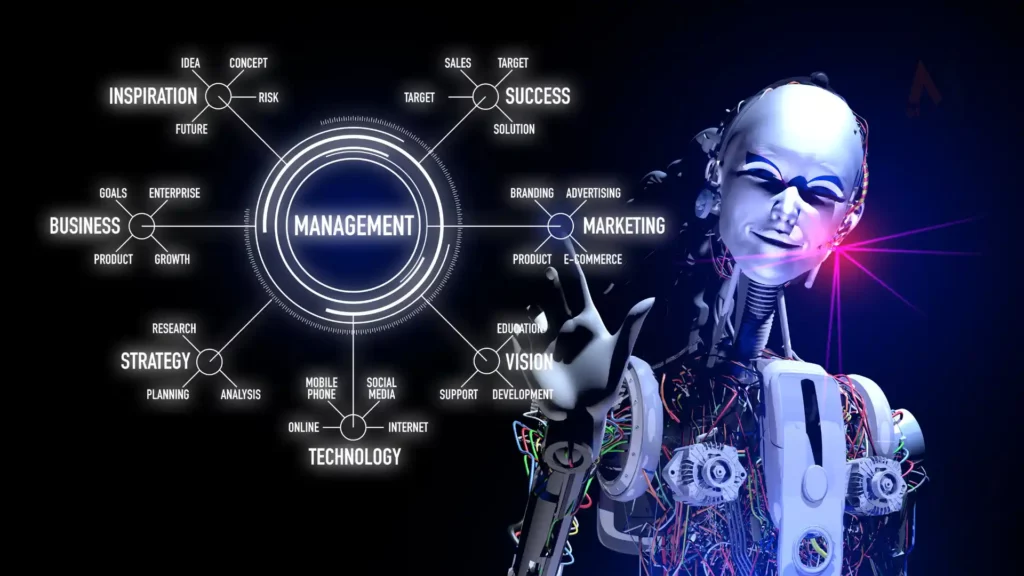
This AI Guide introduces artificial intelligence, covering its components, benefits, and risks. It also explores the development process, from conception through implementation.
The guide will help executives understand the following from the AI Guide:
- What AI is and how it works
- How to identify potential use cases for AI within their organization
- What data is required to develop an AI system
- The different stages of developing an AI system
- The advantages and risks of using AI
- How to create a successful implementation strategy for an AI system
By the end of this guide, executives will have a comprehensive understanding of artificial intelligence and be able to make more informed decisions about utilizing it in their organization.
Introduction to Artificial Intelligence

Artificial Intelligence (AI) has come a long way since its inception, transforming from a concept in science fiction to a driving force behind numerous technological innovations.
As AI continues to evolve, it reshapes industries, enhances productivity, and changes how we live and work. This introduction provides a foundational understanding of AI, its history, and its current applications, enabling individuals and organizations to harness its potential.
At its core, AI refers to developing computer systems that can perform tasks typically requiring human intelligence. These tasks include learning, problem-solving, pattern recognition, understanding natural language, and even exhibiting creativity.
AI research aims to create machines that can think and learn autonomously, adapt to new situations, and solve complex problems without direct human intervention.
The history of AI can be traced back to the mid-20th century, with the 1956 Dartmouth conference marking its official birth. Early AI research focused on creating rule-based systems that mimicked human problem-solving processes.
However, the advent of machine learning in the 1980s revolutionized the field, allowing AI systems to improve their performance over time by analyzing data and identifying patterns.
Deep learning, a subset of machine learning, employs artificial neural networks to enable machines to process vast amounts of data and learn from complex patterns.
In recent years, the development of deep learning techniques, fueled by the exponential growth in computational power and data availability, has further accelerated AI’s progress. This has given rise to several breakthroughs like natural language processing, computer vision, and speech recognition.
Today, AI technologies are utilized across various industries, such as healthcare, finance, retail, manufacturing, and transportation.
AI is streamlining operations, driving innovation, and enhancing decision-making by providing insights derived from vast data.
Examples of AI applications include autonomous vehicles, personalized marketing, fraud detection, medical diagnosis, and even creative tasks like art and music generation.
As AI continues to advance, it brings opportunities and challenges. Organizations must navigate the ethical and regulatory landscape, ensure data privacy and security, and address the potential impact on the workforce.
By understanding the fundamentals of AI, its history, and its potential applications, individuals and organizations can better position themselves to embrace the transformative power of AI and shape a future where technology catalyzes positive change.
THE IMPACT OF AI ON BUSINESSES

The impact of AI on businesses has been significant and far-reaching, touching virtually every industry and transforming how companies operate, compete, and innovate.
As AI technologies mature, their influence on businesses is expected to grow even further. Here are some key areas where AI has substantially impacted businesses:
- Enhanced decision-making: AI-powered analytics and predictive models enable businesses to make data-driven decisions with greater accuracy and speed. By analyzing vast amounts of data, AI can identify patterns, trends, and insights to help businesses develop better strategies, optimize processes, and address potential challenges before they escalate.
- Improved customer experience: AI-driven technologies such as chatbots, virtual assistants, and personalized recommendations have revolutionized customer interactions. These tools provide personalized, 24/7 support, enabling businesses to respond quickly to customer inquiries, resolve issues, and tailor product offerings based on individual preferences and behaviors.
- Increased efficiency and cost savings: AI-enabled automation and process optimization help businesses streamline operations and reduce costs. AI systems can now perform tasks that once required manual intervention, freeing up human resources for more strategic, value-adding activities. This translates to increased productivity and significant cost savings across various functions, from manufacturing to customer service.
- Innovations in products and services: AI technologies have opened up new avenues for innovation and product development, allowing businesses to create more advanced, intelligent, personalized offerings. For instance, AI-powered speech recognition and natural language processing are revolutionizing voice assistants. Computer vision is transforming industries like retail and transportation through applications such as autonomous vehicles and inventory management.
- Competitive advantage: Early adopters of AI technologies often gain a significant competitive advantage over their rivals. By leveraging AI, businesses can differentiate themselves in the market, offer better products and services, and operate more efficiently, ultimately driving growth and profitability.
- Workforce transformation: AI is reshaping the workforce by automating repetitive tasks and creating new roles focused on AI development, implementation, and maintenance. As a result, businesses need to invest in reskilling and upskilling their employees to adapt to the changing landscape and capitalize on the potential of AI.
- Risk management and security: AI-powered systems can help businesses identify and mitigate risks, such as fraud detection in financial transactions or monitoring cybersecurity threats. By analyzing vast amounts of data in real-time, AI can detect anomalies, potential threats, and vulnerabilities, proactively allowing companies to protect their assets and reputation.
Despite these positive impacts, businesses must also navigate various challenges and ethical considerations associated with AI adoption, such as data privacy, security, and the potential for biased algorithms.
By understanding the implications of AI and developing strategies to harness its potential responsibly, businesses can position themselves for success in an increasingly AI-driven world.
Importance Of Understanding AI For Executives

Understanding AI is essential for executives as it is increasingly important in shaping the business landscape and driving success in a competitive environment.
Here are some key reasons executives should prioritize learning about AI:
- Strategic leadership: Executives must understand AI technologies and their potential applications to develop an effective AI strategy. By staying informed about AI advancements, executives can identify opportunities for their organizations to leverage AI for improved decision-making, enhanced customer experiences, cost savings, and increased efficiency.
- Innovation and growth: AI is a key driver of innovation across various industries, enabling the development of new products and services and transforming existing business models. Executives with a strong grasp of AI can recognize emerging trends, evaluate potential investments in AI technologies, and foster a culture of innovation within their organizations.
- Talent management: As AI becomes more prevalent, organizations must recruit and retain employees with relevant skill sets and reskill and upskill existing employees. Executives who understand AI can better assess talent needs, identify skill gaps, and develop training programs enabling their workforce to excel in an AI-driven environment.
- Ethical and regulatory considerations: AI adoption raises numerous ethical and regulatory concerns, such as data privacy, algorithmic bias, and transparency. Executives must be well-versed in these issues to establish responsible AI governance and ensure compliance with applicable laws and regulations.
- Risk management: AI technologies present both business opportunities and risks. Executives need to understand the potential pitfalls, such as security vulnerabilities and the consequences of flawed AI systems, to develop effective risk mitigation strategies and maintain business continuity.
- Stakeholder communication: To secure buy-in from stakeholders, such as investors, employees, and customers, executives must articulate the benefits and risks of AI adoption clearly and convincingly. This requires a solid understanding of AI technologies and their potential impact on the organization and industry.
- Competitive advantage: Staying ahead in the rapidly evolving AI landscape is crucial for maintaining a competitive edge. Executives who understand AI can make informed decisions about investing in AI technologies, partnerships, and acquisitions that will position their organizations for long-term success.
Understanding AI is crucial for executives as it empowers them to lead their organizations effectively in a rapidly changing business landscape.
By staying informed about AI advancements and embracing the potential of these technologies, executives can drive growth, innovation, and success for their organizations.
AI Components: Machine Learning, Deep Learning, Natural Language Processing
AI, or artificial intelligence, comprises several components that work together to enable machines to perform tasks that typically require human intelligence.
Some of the key components of AI include machine learning, deep learning, and natural language processing. Each component contributes to the broader AI ecosystem, empowering various applications and capabilities.
Machine Learning (ML):
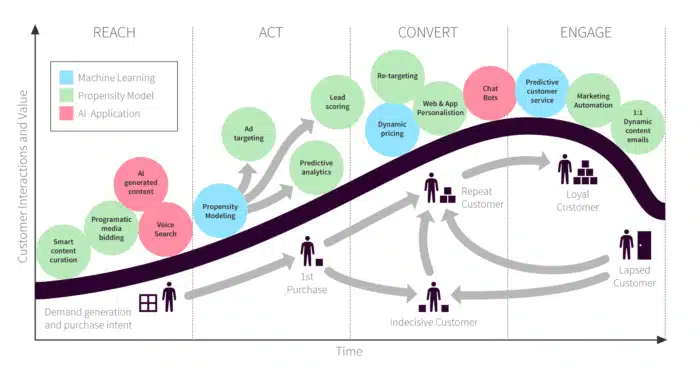
Machine learning is a subset of AI that focuses on developing algorithms that allow computers to learn from and make predictions or decisions based on data.
Rather than relying on explicit programming, ML models identify patterns and relationships within the data, enabling the system to improve its performance over time as it processes more data. Machine learning has three main types:
- Supervised learning: The model is trained on labeled data, where the input-output pairs are provided. The algorithm learns the relationship between the input and output and can then make predictions for new, unseen data.
- Unsupervised learning: The model is trained on unlabeled data without guidance on the desired output. The algorithm identifies patterns or structures within the data, such as clustering or dimensionality reduction.
- Reinforcement learning: The model learns by interacting with its environment and receiving feedback through rewards or penalties. The algorithm aims to maximize the cumulative reward over time, enabling the system to learn optimal behaviors.
Deep Learning (DL):
Deep learning is a specialized branch of machine learning that utilizes artificial neural networks (ANNs) to process and analyze data.
These networks are inspired by the structure and function of the human brain and consist of interconnected layers of nodes or neurons.
Deep learning models can automatically learn complex hierarchical features and representations from raw data, making them particularly effective for tasks involving large amounts of data or high-dimensional inputs, such as image recognition, speech recognition, and natural language understanding.
Natural Language Processing (NLP):

Natural language processing is a subfield of AI that focuses on enabling computers to understand, interpret, and generate human language.
NLP combines linguistics, computer science, and machine learning elements to process and analyze text or speech data, enabling AI systems to interact with humans using natural language. Some common NLP tasks include
- Sentiment analysis: Determining the sentiment or emotion expressed in a text, such as positive, negative, or neutral.
- Named entity recognition: Identifying and classifying entities, such as names, organizations, or locations, within a text.
- Machine translation: Automatically translating text from one language to another.
- Question-answering: Providing accurate and relevant answers to user questions based on a given knowledge base or dataset.
Together, these AI components form the basis of a wide range of applications and systems that mimic or augment human intelligence, shaping the future of technology and its impact on our lives.
Types Of Ai: Narrow Ai, General Ai, And Superintelligent Ai
Artificial intelligence (AI) can be categorized into three main types based on their capabilities and scope: narrow, general, and superintelligent.
Each type represents different stages in the development of AI technology and the extent to which machines can replicate or surpass human cognitive abilities.
Narrow AI (Weak AI):
Narrow AI, or weak AI, is designed to perform specific tasks or solve particular problems. These AI systems excel in their designated tasks, sometimes surpassing human capabilities, but they cannot perform tasks outside their domain.
Narrow AI is the most common type today, with numerous applications across various industries, such as
- Image recognition systems used in computer vision applications.
- Natural language processing algorithms that power chatbots and virtual assistants.
- Online retailers and streaming platforms use recommendation engines.
- Autonomous navigation systems for self-driving vehicles.
Despite their impressive performance in specific tasks, narrow AI systems do not possess general intelligence or the ability to understand, learn, and adapt across multiple domains.
General AI (Strong AI):
General AI, also called strong AI or artificial general intelligence (AGI), is a hypothetical form of AI that can understand, learn, and apply knowledge across various tasks, much like human intelligence.
In contrast, to narrow AI, general AI can transfer knowledge and skills from one domain to another, adapt to new situations, and exhibit problem-solving abilities at a human level or beyond.
Although there has been significant progress in AI research, we have yet to achieve artificial general intelligence. Achieving AGI would represent a major milestone in AI development and would likely lead to significant advancements in various fields, from science and medicine to economics and social systems.
Superintelligent AI:
Superintelligent AI is a hypothetical form that surpasses human intelligence in virtually every domain, including creativity, problem-solving, and general cognitive abilities. A superintelligent AI could outperform the most knowledgeable and skilled human experts in every field, and its capabilities would extend far beyond those of general AI.
The concept of superintelligence raises numerous ethical, philosophical, and safety concerns, as it could lead to unintended consequences or existential risks for humanity. Researchers and experts in the AI field emphasize the importance of developing robust safety measures, ethical guidelines, and governance frameworks to mitigate potential risks associated with developing superintelligent AI systems.
AI can be classified into three types based on their capabilities: narrow AI, which excels in specific tasks but lacks general intelligence; general AI, which possesses human-like cognitive abilities across multiple domains; and superintelligent AI, which surpasses human intelligence in every aspect. While narrow AI is prevalent today, general AI and superintelligent AI remain theoretical concepts that present opportunities and challenges for future AI research and development.
Successful Generative AI Examples Worth Noting
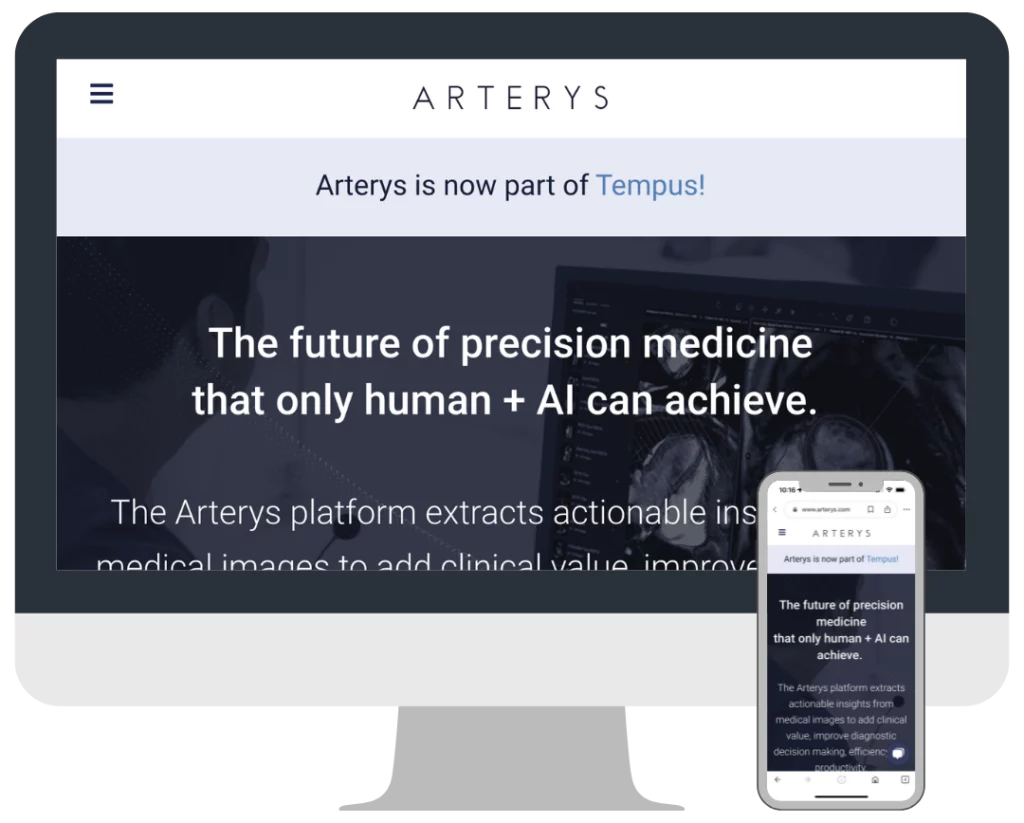
Generative AI has made significant strides in recent years, resulting in several successful applications across various domains.
Here are some noteworthy examples of generative AI:
1. GPT-3 by OpenAI:
GPT-3, or the third iteration of the Generative Pre-trained Transformer, is a state-of-the-art language model that can generate human-like text. With its immense scale and impressive capabilities, GPT-3 has been used for various applications, including natural language understanding, translation, summarization, and content generation.
2. DeepArt.io:
DeepArt.io is an online platform that uses generative AI algorithms to transform user-uploaded images into digital artwork mimicking the style of famous artists. The platform is based on a neural style transfer algorithm that combines one image’s content with another’s style, creating unique and visually stunning results.
3. DALL-E by OpenAI:
DALL-E is a generative AI model that creates images from textual descriptions. By simply inputting a description, such as “a two-story pink house with a white fence,” DALL-E generates original and coherent images that match the given description, demonstrating the potential for AI-generated visual content in advertising, design, and entertainment.
4. AIVA (Artificial Intelligence Virtual Artist)
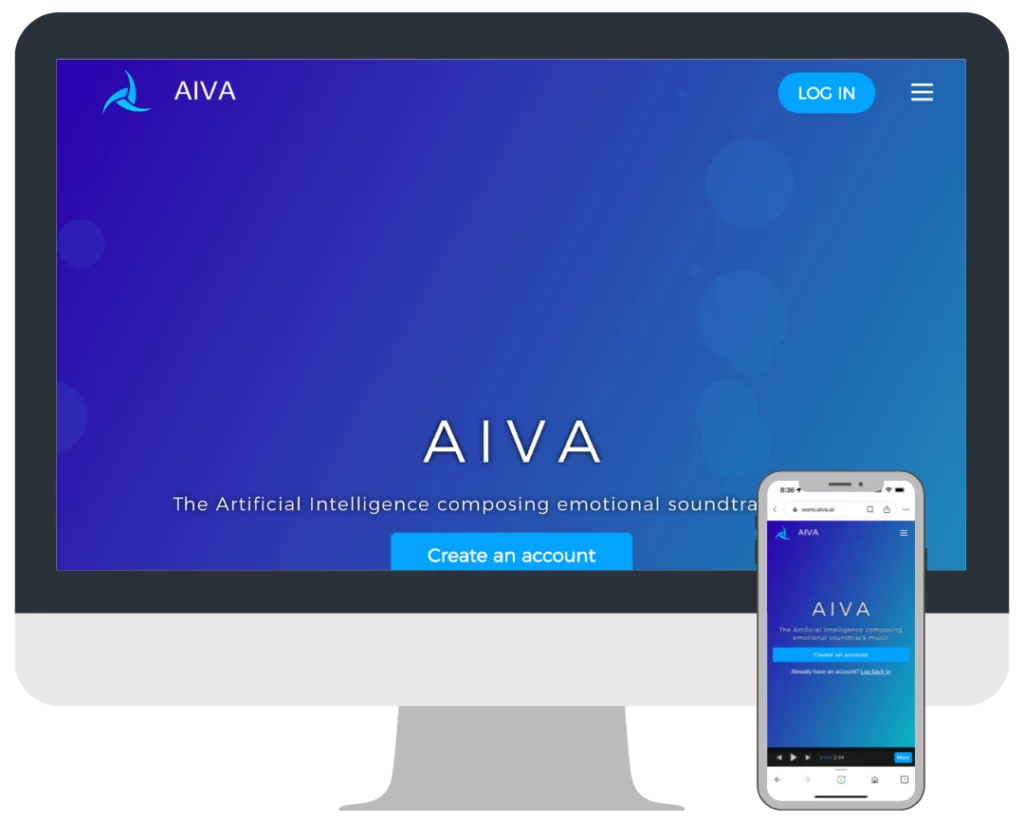
AIVA is a generative AI system that composes original music across various genres. Trained on a large classical music dataset, AIVA can generate music for various purposes, including films, video games, and commercials.
The system has even been recognized as a composer by the SACEM, a French music copyright organization.
5. DeepMind’s AlphaFold
AlphaFold is a generative AI model developed by DeepMind that predicts protein folding structures with remarkable accuracy.
This groundbreaking achievement has significant implications for understanding diseases, drug development, and bioengineering, as it enables researchers to predict protein structures that were previously difficult or impossible to determine.
6. NVIDIA’s GauGAN and Our AI guide
GauGAN is a generative AI model by NVIDIA that can create realistic landscape images based on user-defined inputs.
Users can sketch a simple scene with basic shapes and colors, and GauGAN generates photorealistic images that match the input, showcasing its potential for design, architecture, and entertainment applications.
These examples highlight the impressive capabilities of generative AI and its potential to revolutionize various industries by automating creative tasks, generating high-quality content, and enabling new forms of artistic expression.
What Ai-Driven Technologies Are Available Today?

AI-driven technologies have become increasingly prevalent in recent years, transforming industries and influencing various aspects of our daily lives.
Some notable AI-driven technologies are available today:
- Virtual Assistants and Chatbots: Virtual assistants like Siri, Alexa, and Google Assistant use AI technologies such as natural language processing (NLP) and speech recognition to understand and respond to user queries, providing personalized assistance and support.
- Recommendation Engines: AI-powered recommendation systems are commonly used by e-commerce platforms, streaming services, and social media platforms to personalize content and product suggestions based on user preferences, behavior, and interactions.
- Computer Vision: AI-driven computer vision technologies enable machines to recognize and interpret visual information from images or videos. Applications include facial recognition, object detection, and autonomous navigation systems in self-driving vehicles.
- Natural Language Processing (NLP): Besides virtual assistants and chatbots, NLP has numerous applications, such as sentiment analysis, machine translation, and text summarization, enabling AI systems to analyze and process human language more effectively.
- Speech Recognition: AI-powered speech recognition systems can transcribe spoken language into written text, enabling applications like voice assistants, transcription services, and voice-controlled devices.
- Robotics and Automation: AI technologies are increasingly integrated into robotics, allowing for enhanced autonomy, adaptability, and decision-making capabilities in various applications, such as manufacturing, healthcare, and logistics.
- Predictive Analytics: AI-driven predictive analytics tools enable organizations to analyze large volumes of data to identify patterns, trends, and relationships, helping them make more informed decisions, forecast demand, and optimize processes.
- Anomaly Detection: AI systems can monitor vast amounts of data in real time, identifying unusual patterns or behaviors that could signal potential issues, such as fraud, cybersecurity threats, or equipment malfunctions.
- Personalized Marketing: AI-driven marketing tools can analyze user behavior, preferences, and demographics to deliver targeted advertisements, promotions, and content, enhancing the effectiveness of marketing campaigns.
- Healthcare: AI technologies are revolutionizing healthcare by improving diagnostic accuracy, enabling personalized treatment plans, and streamlining drug discovery and development processes.
- Financial Services: AI-driven technologies are increasingly used in the finance sector for applications like fraud detection, risk assessment, algorithmic trading, and credit scoring.
These are just a few examples of the many AI-driven technologies available today. As AI continues to evolve and mature, we can expect even more innovative applications to emerge, transforming industries and shaping our daily lives in new and exciting ways.
What AI Applications Help Industries The Most?
AI applications have significantly impacted various industries, driving innovation, efficiency, and growth. Here are some key AI applications that have proven to be particularly beneficial across different sectors:
- Predictive Maintenance: AI-powered predictive maintenance systems can analyze large volumes of sensor data from industrial equipment to identify patterns and anomalies, helping to predict equipment failures and optimize maintenance schedules, reducing downtime and operational costs.
- Supply Chain Optimization: AI can optimize supply chain operations by forecasting demand, managing inventory, and optimizing logistics, improving efficiency, reducing costs, and better customer satisfaction.
- Customer Service: AI-powered chatbots and virtual assistants have transformed customer service by providing personalized, 24/7 support, enabling businesses to respond quickly to customer inquiries, resolve issues, and enhance customer experiences.
- Personalized Marketing: AI-driven marketing tools can analyze user behavior, preferences, and demographics to deliver targeted advertisements, promotions, and content, enhancing the effectiveness of marketing campaigns and improving customer engagement.
- Fraud Detection and Risk Management: In financial services, AI algorithms can monitor transactions and user behavior in real-time, identifying potential fraud, assessing credit risk, and making informed lending decisions.
- Healthcare Diagnostics and Treatment: AI technologies are revolutionizing healthcare by improving diagnostic accuracy, enabling personalized treatment plans, and streamlining drug discovery and development processes.
- Manufacturing and Robotics: AI-powered robots and automation systems can enhance manufacturing processes by improving precision, speed, and efficiency, reducing waste and human error, and adapting to changes in production requirements.
- Agriculture: AI-driven technologies, such as drones, computer vision, and machine learning, can help farmers monitor crop health, optimize irrigation, and predict yields, leading to increased productivity and sustainability in agriculture.
- Human Resources: AI applications can streamline the recruitment process by screening resumes, predicting candidate success, and automating repetitive tasks, allowing HR professionals to focus on more strategic aspects of their roles.
- Autonomous Vehicles: AI-driven systems enable self-driving vehicles to navigate complex environments, interpret sensor data, and make decisions in real-time, transforming the transportation industry and potentially improving safety and efficiency.
These AI applications have significantly impacted various industries, helping organizations optimize processes, reduce costs, innovate, and remain competitive in an ever-evolving business landscape.
As AI technologies advance, their influence on industries is expected to expand further, creating new opportunities and driving transformative change.
How Do You Prepare Your Organization For AI Adoption
Preparing your organization for AI adoption involves strategic planning, resource allocation, and fostering a culture that embraces AI-driven technologies.
Here are some key steps to help your organization effectively adopt AI:
- Develop an AI strategy: Assess your organization’s goals, priorities, and current capabilities to identify areas where AI can have the most significant impact. Establish a clear vision and roadmap for AI implementation, considering short-term and long-term objectives.
- Identify use cases: Analyze your organization’s processes, challenges, and opportunities to determine specific AI applications that can address pain points, improve efficiency, and drive growth. Prioritize use cases based on potential benefits, feasibility, and alignment with your organization’s strategic objectives.
- Invest in infrastructure: Ensure your organization has the necessary infrastructure to support AI technologies, including hardware, software, and network capabilities. Evaluate and invest in cloud-based services or on-premises solutions that best meet your organization’s needs and budget.
- Acquire and develop talent: Identify the skills and expertise needed to implement and manage AI technologies within your organization. This may include hiring data scientists, machine learning engineers, and AI specialists or reskilling and upskilling existing employees through training and development programs.
- Establish cross-functional teams: Encourage collaboration between business, IT, and data teams to ensure seamless integration of AI technologies into your organization’s processes and workflows. Engage stakeholders from various departments to promote a shared understanding of AI applications and their potential impact.
- Data management: Ensure your organization can access high-quality, relevant, and diverse data sets to train and optimize AI algorithms. Develop data governance policies and practices that ensure data privacy, security, and compliance with regulatory requirements.
- Implement AI responsibly: Address ethical and legal considerations related to AI adoption, such as data privacy, algorithmic bias, and transparency. Develop guidelines and governance structures that promote responsible AI use and mitigate potential risks.
- Pilot projects and scaling: Start with pilot projects to test and validate AI applications in a controlled environment, gathering insights and feedback to refine the implementation process. Once successful, scale AI solutions across the organization, continuously monitoring and optimizing their performance.
- Foster a culture of innovation: Encourage a mindset of experimentation, learning, and adaptation within your organization. Emphasize embracing new technologies and staying agile in the face of change.
- Monitor and measure success: Establish key performance indicators (KPIs) to track the success of AI initiatives, regularly evaluating their impact on your organization’s performance, efficiency, and competitiveness. Use these insights to refine your AI strategy and drive continuous improvement.
By following these steps, your organization can successfully adopt AI technologies, unlocking new opportunities for growth, innovation, and competitive advantage in an increasingly AI-driven business landscape.
Ethical Considerations and AI Governance
As AI technologies become more integrated into various aspects of society, addressing ethical considerations and establishing effective governance structures must ensure responsible and transparent AI use.
Here are some key ethical concerns and guidelines for AI governance:
- Data Privacy and Security: AI systems often rely on large volumes of personal and sensitive data, raising concerns about privacy and the potential misuse of information. Organizations must adhere to data protection regulations and implement robust security measures to safeguard user data and ensure privacy.
- Bias and Fairness: AI algorithms can inadvertently perpetuate biases in the training data or development process, leading to discriminatory outcomes. It is crucial to ensure AI models are trained on diverse and representative data sets, and regularly audited for potential biases, to promote fairness and prevent discrimination.
- Transparency and Explainability: AI systems can sometimes act as “black boxes,” making it difficult to understand their decision-making processes. Organizations should prioritize developing explainable AI models and document their methodologies to promote transparency and accountability.
- Human Oversight and Control: AI systems should be designed to complement and augment human decision-making rather than replace it entirely. Establish guidelines that ensure appropriate levels of human oversight and control over AI systems, particularly in high-stakes scenarios where the consequences of errors could be severe.
- Liability and Accountability: Clearly define the roles and responsibilities of stakeholders involved in AI development, deployment, and maintenance. Establish protocols for addressing potential legal and ethical issues arising from AI system malfunctions or unintended consequences.
- Environmental Impact: Consider the energy consumption and carbon footprint associated with AI technologies, particularly in the case of large-scale training of AI models. Develop strategies to minimize environmental impact using energy-efficient hardware, optimizing algorithms, or leveraging cloud-based resources.
- Long-term Social Impact: Assess the potential social consequences of AI adoption, such as job displacement or widening inequality, and develop strategies to mitigate these risks. Encourage the development of AI technologies that promote social welfare, inclusivity, and sustainable development.
- Collaboration and Stakeholder Engagement: Foster a multi-stakeholder approach to AI governance involving representatives from academia, industry, government, and civil society. Encourage collaboration and knowledge sharing to address common challenges and promote responsible AI development.
- Regulatory Compliance: Ensure your organization complies with relevant AI-related regulations, standards, and best practices. Regularly monitor the evolving regulatory landscape and adapt your governance structures accordingly.
- Ethical AI Culture: Promote a culture of ethical AI development and use within your organization, emphasizing the importance of aligning AI technologies with human values and ethical principles. Provide training and resources to help employees understand and address ethical considerations.
Addressing these ethical considerations and establishing effective AI governance structures can help organizations ensure responsible AI use, mitigate potential risks, and promote trust in AI-driven technologies.
Overcoming Challenges and Mitigating Risks
Successfully adopting AI technologies in an organization often involves overcoming challenges and mitigating risks associated with its implementation.
Here are some strategies to address these challenges and minimize potential risks:
- Data Quality and Management: Poor data quality can hinder AI system performance and lead to incorrect or biased outcomes. Ensure your organization can access high-quality, diverse, and representative data sets to train and optimize AI algorithms. Establish data governance policies and practices that ensure data privacy, security, and compliance with regulatory requirements.
- Talent Acquisition and Retention: The demand for skilled AI professionals often outpaces supply, creating a competitive talent market. Develop strategies to attract and retain AI talent, such as competitive compensation packages, professional development opportunities, and fostering a culture of innovation.
- Change Management: AI adoption may involve significant changes to existing processes and workflows, requiring effective change management strategies. Communicate the benefits and potential impacts of AI implementation to stakeholders, provide adequate training and support, and encourage a culture of continuous learning and adaptation.
- Ethical Concerns: Address ethical issues related to AI adoption, such as data privacy, algorithmic bias, and transparency. Develop guidelines and governance structures that promote responsible AI use and encourage a culture of ethical AI development within your organization.
- Integration Challenges: Integrating AI technologies into existing systems and processes can be complex and resource-intensive. Plan for integration challenges by allocating adequate resources, engaging cross-functional teams, and establishing clear stakeholder communication channels.
- Technology Selection: Selecting the right AI technologies and solutions for your organization’s specific needs and goals can be challenging. Conduct thorough research, consider vendor reputation and expertise, and test solutions in pilot projects before full-scale implementation.
- Scalability: AI projects may initially be successful on a small scale but face challenges when scaling across the organization. Plan for scalability by ensuring your infrastructure can support larger-scale AI applications and develop processes to monitor and optimize AI system performance as it scales.
- Legal and Regulatory Compliance: Ensure your organization complies with relevant AI-related regulations, standards, and best practices. Regularly monitor the evolving regulatory landscape and adapt your governance structures accordingly.
- Resource Allocation and Budgeting: AI projects may require significant investment in infrastructure, talent, and other resources. Develop a clear budget and resource allocation plan to ensure your organization can support AI initiatives without compromising other business priorities.
- Performance Monitoring and Evaluation: Establish key performance indicators (KPIs) to track the success of AI initiatives and regularly evaluate their impact on your organization’s performance, efficiency, and competitiveness. Use these insights to refine your AI strategy and drive continuous improvement.
By addressing these challenges and mitigating risks, organizations can successfully adopt AI technologies, unlocking new opportunities for growth, innovation, and competitive advantage in an increasingly AI-driven business landscape.
AI Governance And Regulatory Landscape
Effective AI governance ensures responsible AI use, protects consumer and user interests, and addresses potential risks and ethical concerns.
The AI governance and regulatory landscape is continually evolving as governments and regulatory bodies strive to adapt to the rapid pace of AI development and deployment.
Here are some key aspects of the AI governance and regulatory landscape:
- Data Privacy and Protection: Data protection regulations, such as the General Data Protection Regulation (GDPR) in the European Union, the California Consumer Privacy Act (CCPA) in the United States, and other similar laws worldwide, have significant implications for AI systems that rely on personal data. Organizations must ensure compliance with data privacy regulations and implement robust security measures to safeguard user data.
- Algorithmic Fairness and Bias: Regulatory bodies and standards organizations increasingly focus on addressing algorithmic bias and ensuring fairness in AI systems. Guidelines and best practices have been proposed to minimize biases in AI model development, such as using diverse and representative data sets and auditing algorithms for potential biases.
- Explainability and Transparency: As AI systems become more integrated into various aspects of society, there is a growing demand for greater transparency and explainability in AI decision-making processes. Regulations and guidelines may require organizations to provide clear documentation of AI methodologies and ensure that AI models are understandable.
- Liability and Accountability: The legal and regulatory landscape is evolving to address liability and accountability issues in AI systems. Regulations may require organizations to clearly define the roles and responsibilities of stakeholders involved in AI development, deployment, and maintenance and establish protocols for addressing potential legal and ethical issues.
- Human Oversight: As AI systems become more autonomous, regulations may emphasize the importance of human oversight and control in AI-driven decision-making processes. Guidelines and best practices may require organizations to maintain appropriate levels of human involvement and ensure AI systems are designed to complement and augment human capabilities.
- Cross-border Collaboration: AI governance and regulatory frameworks are increasingly being developed through international collaboration and coordination among governments, regulatory bodies, and industry stakeholders. Cross-border collaboration is essential to address common challenges and ensure consistency in AI governance standards and best practices.
- Industry-specific Regulations: AI regulations may vary depending on the industry and specific use case. For example, AI applications in healthcare, finance, or transportation may be subject to additional regulations and standards, such as patient privacy, financial risk management, or vehicle safety.
- Ethical Guidelines: In addition to formal regulations, organizations may also need to adhere to ethical guidelines and principles for AI development and use, such as those proposed by the European Commission’s High-Level Expert Group on Artificial Intelligence or the OECD AI Principles. Responsible AI is the only way to go.
As the AI governance and regulatory landscape evolve, organizations must stay updated with emerging regulations, standards, and best practices to ensure compliance, address potential risks, and promote responsible and transparent AI use.
Developing AI Policies And Guidelines For Your Organization
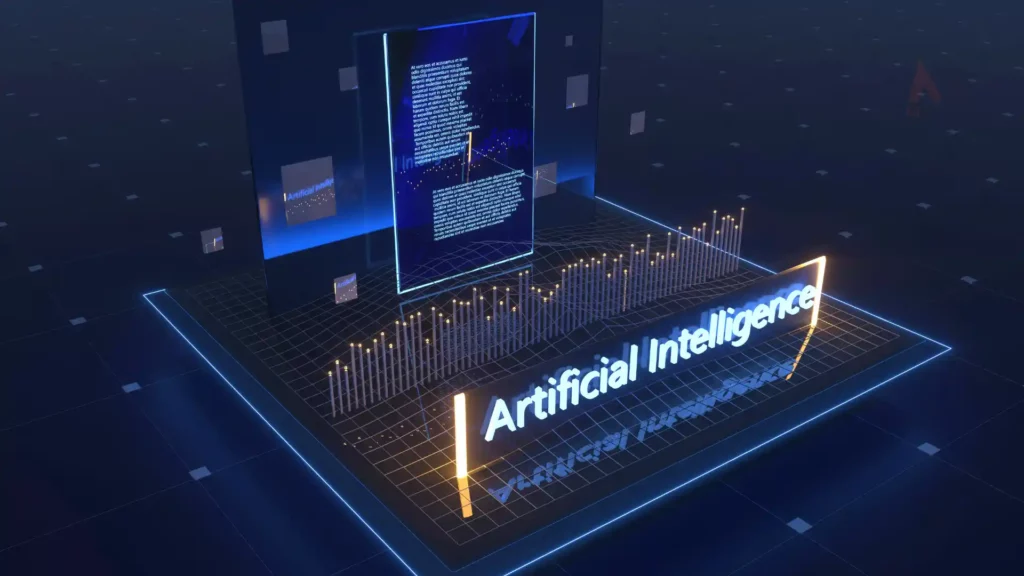
Developing AI policies and guidelines for your organization is crucial for ensuring responsible and ethical AI implementation. A comprehensive AI policy can help your organization adhere to relevant regulations, address potential risks, and promote trust in AI-driven technologies.
Here are some steps to develop AI policies and guidelines for your organization:
- Understand the regulatory landscape: Stay informed about relevant AI regulations, standards, and best practices for your organization, industry, and location. Consider data privacy and protection laws, algorithmic fairness and bias guidelines, and industry-specific regulations.
- Align with organizational values and objectives: Ensure that your AI policies and guidelines align with your organization’s values, mission, and strategic objectives. This will help create a cohesive AI strategy supporting your organization’s goals.
- Establish clear principles: Develop a guiding principle for AI development and use within your organization. These principles may include fairness, transparency, accountability, privacy, security, and human-centric design.
- Data management: Create policies for data collection, storage, processing, and sharing, ensuring compliance with data protection laws and best practices. Address data quality, diversity, and representativeness, as well as privacy and security measures.
- Address ethical concerns: Develop guidelines that address ethical issues related to AI adoption, such as algorithmic bias, transparency, and data privacy. Encourage a culture of ethical AI development and use within your organization.
- Human oversight and control: Establish guidelines that ensure appropriate levels of human oversight and control over AI systems, particularly in high-stakes scenarios where the consequences of errors could be severe.
- Roles and responsibilities: Clearly define the roles and responsibilities of stakeholders involved in AI development, deployment, and maintenance, including data scientists, engineers, and business leaders.
- Training and education: Provide resources and training programs to help employees understand and address ethical considerations. Encourage continuous learning and development to keep pace with the rapidly evolving AI landscape.
- Monitoring and evaluation: Establish key performance indicators (KPIs) and metrics to track the success and impact of AI initiatives. Regularly evaluate AI systems for performance, fairness, and compliance with policies and guidelines, and make necessary adjustments.
- Review and update: Regularly review and update your AI policies and guidelines to reflect changes in the regulatory landscape, technological advancements, and evolving organizational goals. Ensure your policies remain relevant and effective in guiding responsible AI development and use.
By developing comprehensive AI policies and guidelines for your organization, you can foster responsible and ethical AI adoption, mitigate potential risks, and promote trust in AI-driven technologies.
Measuring AI Impact and ROI
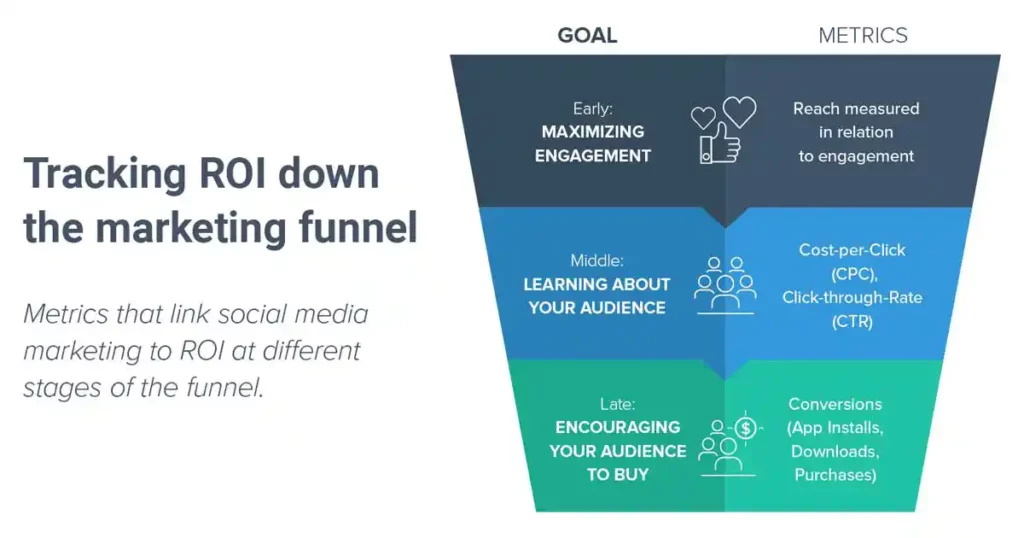
Measuring AI initiatives’ impact and return on investment (ROI) is crucial for organizations to assess the effectiveness of their AI projects, justify investments, and make data-driven decisions for future AI implementation.
Here are some steps and considerations for measuring AI impact and ROI:
- Define clear objectives: Establish objectives for your AI initiatives, including improving efficiency, enhancing customer experiences, driving revenue growth, or reducing operational costs. These objectives will serve as the foundation for evaluating AI impact and ROI.
- Identify relevant metrics: Based on your objectives, identify relevant metrics and key performance indicators (KPIs) to measure AI impact. These may include quantitative metrics like cost savings, revenue generation, or time reduction and qualitative metrics like customer satisfaction, employee engagement, or improved decision-making.
- Establish a baseline: Before implementing AI solutions, measure the current state of the processes and workflows that the AI initiative will impact. This baseline will be a reference point for comparing the performance before and after AI implementation.
- Calculate costs: To calculate ROI, it’s essential to account for all the costs associated with AI implementation, including infrastructure investments, software and licensing fees, talent acquisition and training, and ongoing maintenance and support.
- Monitor and measure impact: Continuously monitor the performance of your AI initiatives using the identified metrics and KPIs. Collect and analyze AI impact data regarding process efficiency, cost reduction, revenue generation, or other relevant measures.
- Calculate ROI: To calculate the ROI of your AI initiatives, compare the benefits generated by the AI implementation with the associated costs. ROI can be expressed as a percentage or ratio to give a clear picture of the return on investment.
ROI = (Benefits – Costs) / Costs - Adjust for external factors: When measuring AI impact and ROI, consider external factors that may have influenced the results, such as market conditions, competitor actions, or changes in customer behavior. Adjust the analysis to account for these factors and ensure a more accurate assessment of AI impact.
- Conduct ongoing evaluation: AI systems may require continuous optimization and improvement to maintain performance and impact. Regularly evaluate the performance of your AI initiatives and adjust the algorithms, data sets, or processes as needed to maximize their impact and ROI.
- Communicate results: Share the results of AI impact and ROI measurements with relevant stakeholders, including executive leadership, employees, and investors. Transparent communication can help build trust, promote understanding, and secure ongoing support for AI initiatives.
- Learn and iterate: Use the insights from measuring AI impact and ROI to inform future AI strategy, investment decisions, and implementation approaches. Continuously refine your AI initiatives based on data-driven insights and lessons learned.
By systematically measuring AI impact and ROI, organizations can better understand the value of their AI investments, optimize their AI strategy, and maximize the benefits of AI-driven technologies. How to Choose the Right AI Digital Marketing Agency: A Comprehensive Guide for Marketing Managers
Future Trends in AI
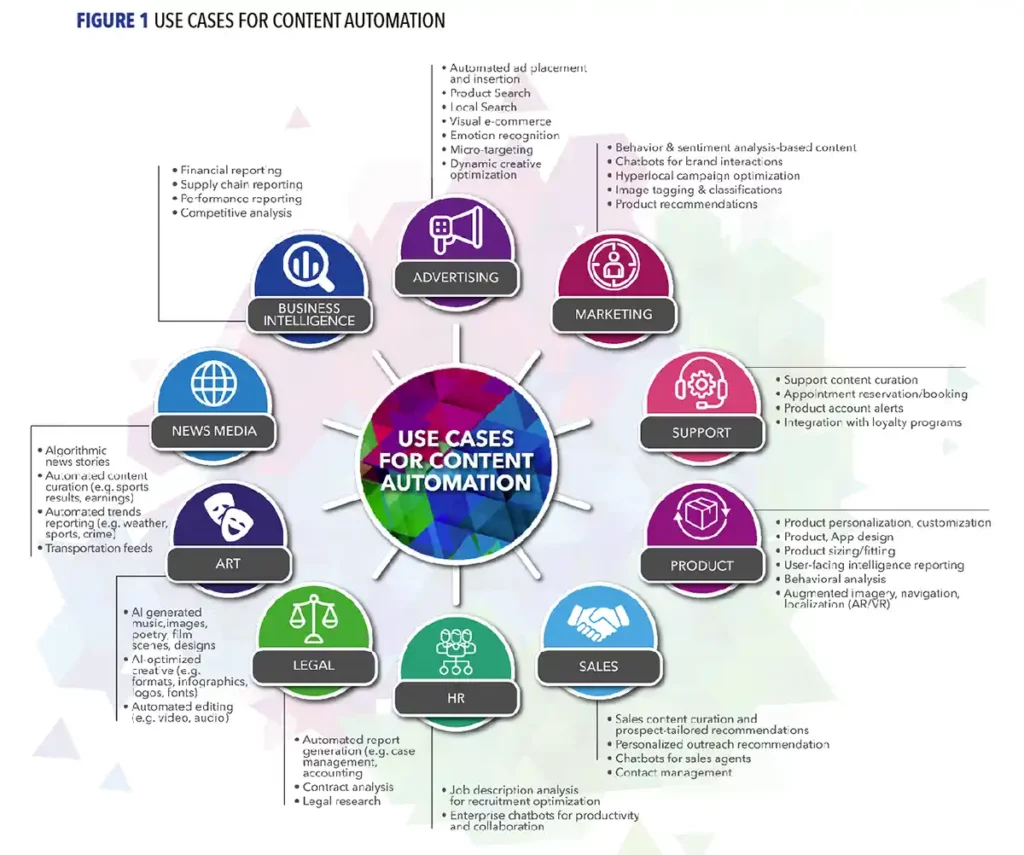
As AI continues to evolve and mature, several trends are expected to shape the future landscape of AI and its applications across various industries. Here are some key future trends in AI:
- AI democratization: With the rise of user-friendly AI platforms, tools, and frameworks, AI technology is becoming more accessible to a wider range of people, including non-experts. This democratization of AI will enable more organizations to leverage AI-driven solutions and encourage innovation across various domains.
- AI explainability and transparency: As AI systems become more complex and integrated into critical decision-making processes, there will be an increasing demand for explainable and transparent AI. Researchers and practitioners will continue to develop techniques and tools that provide insights into the inner workings of AI algorithms, enabling better understanding and trust in AI systems.
- AI ethics and regulation: The ethical implications of AI, such as bias, fairness, privacy, and accountability, will continue to be a focus for organizations, governments, and regulatory bodies. We can expect the development of more comprehensive guidelines, regulations, and industry standards to ensure responsible AI development and use.
- AI and the edge: Edge computing, where data processing occurs closer to the data source, is becoming more prevalent as IoT devices proliferate. AI algorithms will be increasingly deployed at the edge, enabling real-time decision-making and reducing the need for constant communication with centralized servers.
- AI-powered automation: AI will continue to drive automation across various industries, from manufacturing and logistics to customer service and administration. As AI algorithms become more capable, we can expect to see greater automation, leading to increased efficiency and cost savings for organizations.
- AI and human augmentation: AI technologies will increasingly augment human capabilities, enhancing our abilities to learn, make decisions, and perform complex tasks. AI-powered tools will help individuals and teams collaborate more effectively, optimize workflows, and drive innovation.
- AI in healthcare: AI-driven advancements in healthcare will continue, ranging from personalized medicine and drug discovery to early disease detection and remote patient monitoring. AI will improve patient outcomes, reduce healthcare costs, and address global health challenges. AI Marketing Plan for Manufacturing Businesses
- Natural language processing and understanding: NLP and NLU technologies will continue to improve, enabling more sophisticated AI-driven conversational agents, sentiment analysis, and information extraction. These advances will revolutionize how we interact with technology and access information.
- AI and cybersecurity: As cyber threats become more sophisticated, AI will play a pivotal role in enhancing cybersecurity capabilities. AI-driven security systems will be better equipped to detect and respond to cyber threats, protecting critical infrastructure and sensitive information.
- AI in creative fields: AI will increasingly be used in creative domains, such as art, music, and design, assisting in generating new ideas and enhancing human creativity. While AI-generated content may raise concerns about authenticity and originality, it will enable novel artistic expression and collaboration.

These trends represent just a snapshot of AI’s future as technology continues to evolve and transform industries, societies, and daily lives. By staying informed of these trends, organizations can adapt and position themselves for success in an increasingly AI-driven world.
Conclusion on AI Guide for Executives
In conclusion, rapid advancements in AI have significantly impacted businesses, industries, and societies worldwide.
As AI continues to evolve, executives and organizations must understand its fundamental aspects, components, types, and applications across various domains. How to Use AI Digital Marketing to Transform Your Marketing Results
To ensure successful AI implementation, keep up with AI-driven technologies, prepare organizations for AI adoption, and address ethical considerations and governance challenges.
Measuring the impact and ROI of AI initiatives helps organizations assess the effectiveness of their AI projects and make data-driven decisions for future implementations. By staying informed of the emerging trends in AI, organizations can adapt and position themselves for success in an increasingly AI-driven world.
Developing AI policies and guidelines within organizations fosters responsible and ethical AI adoption, mitigates potential risks, and promotes trust in AI-driven technologies. AI Marketing Plan for Manufacturing Businesses
As AI becomes more integrated into our daily lives, organizations must continue to adapt and innovate, leveraging AI to unlock new opportunities for growth, efficiency, and competitive advantage.
Why Choose Matrix Marketing Group For Ai Digital Marketing Solutions
Matrix Marketing Group is an ideal choice for AI-driven digital marketing solutions due to its expertise, comprehensive approach, and commitment to delivering results. Here are some reasons to choose Matrix Marketing Group for AI digital marketing solutions:
1. Expertise and Experience:
Matrix Marketing Group has a team of skilled professionals with extensive experience in digital marketing and AI technologies. Their expertise enables them to develop and implement effective AI-driven strategies tailored to your business needs and objectives.
2. Holistic Approach:
Matrix Marketing Group adopts a comprehensive approach to digital marketing, integrating AI technologies with traditional marketing methods to create a cohesive strategy that maximizes impact. Their holistic approach ensures that all digital marketing efforts work together seamlessly, resulting in better ROI and long-term success.
3. Data-driven Decision Making:
Matrix Marketing Group leverages the power of AI to analyze vast amounts of data, derive insights, and make informed decisions. This data-driven approach allows them to optimize your marketing campaigns, improve targeting, and deliver personalized content that resonates with your audience.
4. Cutting-edge AI Solutions:
Matrix Marketing Group stays up-to-date with the latest advancements in AI technology and applies innovative solutions to your digital marketing efforts. This commitment to innovation ensures that your marketing strategy remains competitive and effective in an ever-evolving landscape.
5. Scalable Solutions:
Matrix Marketing Group offers scalable AI-driven digital marketing solutions that can grow your business. As your organization expands, it can adapt its strategies and technologies to meet your changing needs and requirements, ensuring long-term success.
6. Results-oriented Focus:
Matrix Marketing Group is committed to delivering tangible results that contribute to your business’s growth and success. They continuously measure the impact of their AI-driven marketing strategies and optimize them to maximize ROI, ensuring that your marketing efforts are consistently effective.
7. Customer-centric Approach:
Matrix Marketing Group prioritizes your business’s unique needs and goals, developing customized AI-driven marketing strategies that align with your objectives. Their customer-centric approach ensures that your marketing efforts are tailored to your target audience, delivering relevant and engaging content that drives results.
8. Ethical AI Practices:
Matrix Marketing Group is committed to using AI technologies responsibly and ethically. It adheres to established best practices and guidelines, ensuring its AI-driven marketing solutions align with ethical considerations and regulatory requirements.
By choosing Matrix Marketing Group for your AI digital marketing solutions, you can benefit from their expertise, innovative approach, and dedication to delivering results that drive business growth and success. AI Digital Marketing Trends and Future for Matrix Marketing Group [Interview]
General FAQs on AI Guide for Executives
How can I determine if my business needs AI-driven digital marketing solutions?
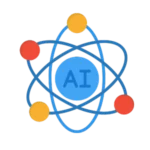
To determine if your business needs AI-driven digital marketing solutions, consider the following factors: the size and complexity of your marketing campaigns, the volume of data you collect and analyze, the level of personalization you aim to achieve, and your overall marketing goals. If you need help managing and analyzing large volumes of data or want to improve campaign targeting, personalization, and ROI.
What types of AI-driven digital marketing solutions are available for businesses?
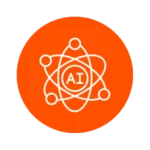
Various AI-driven digital marketing solutions, such as AI-powered chatbots for customer engagement, machine learning algorithms for better audience targeting and segmentation, natural language processing for sentiment analysis and content generation, and predictive analytics for data-driven decision-making, are available. Your solutions should align with your marketing objectives and business needs.
How do I know which AI-driven digital marketing solutions are right for my business?

Clearly define your marketing objectives and challenges to identify the most suitable AI-driven digital marketing solutions for your business. Evaluate your current marketing strategies, identify areas where AI can add value, and consider your budget and resources. Consult with experts or partner with a reputable digital marketing agency, like Matrix Marketing Group, to help you develop and implement the most effective AI-driven solutions tailored to your needs.
How can I ensure that implementing AI-driven digital marketing solutions is cost-effective for my business?

Set clear objectives and KPIs for your AI-driven marketing initiatives to ensure cost-effectiveness. Continuously monitor and measure the performance of your AI solutions to assess their impact on your marketing ROI. This will help you identify areas where AI implementation delivers results and optimize your marketing efforts accordingly. Additionally, partnering with a reputable digital marketing agency, such as Matrix Marketing Group, can help you efficiently implement AI solutions and maximize their benefits while minimizing costs.

